
Technical Specifications as listed by HWLabs:
- 140 mm x 2 fan Xtreme form factor two-pass radiator
- 312mm x 153mm x 54mm (L x W x H)
- 16 FPI 25 Micron Copper Fins
- Now optimized for sub-800 rpm ultra-stealth fans
- Supercruise optimizations for scalable performance with higher speed fans
- 15% more tubing area in the same Black Ice® GTX™ 280 form factor
- Increased internal coolant flow rates
- Standard G 1/4″ inlet/outlet fittings
- Standard M4 mounting threads
- Custom Dark Matter™ high quality finish
- Fully ROHS Compliant
- 100% Made from conflict-free materials
- Industry standard Black Ice® quality
- Lifetime warranty against manufacturing defects
Dimensions Measured on the Radiator Tested:
 Most HWLabs radiators are wider than other manufactures and the Nemesis 280 GTX is no different. With a width of 153mm it is ~8mm wider than most other competitors.
Most HWLabs radiators are wider than other manufactures and the Nemesis 280 GTX is no different. With a width of 153mm it is ~8mm wider than most other competitors.
Radiator Core Dimensions:

The Nemesis 280 GTX is a dual pass radiator, but not in the traditional sense where the coolant flow path is side to side or U flow. On the Nemesis GTX series radiators including the 280 version, the flow path is front to back.
Let’s take a quick look at a U-Flow radiator first and make sure we understand the flow path that nearly all other radiators on the market use. The following picture shows a typical U-Flow coolant flow path, where the coolant travels up all the tubes on one side (left in pic) of the rad and then returns down the other side. U-Flow is most easily recognized when the port end has 2 separate tanks.
The Nemesis 280 GTX (and other Nemesis GTX models) is significantly different in that the coolant flow path is front to back OR back to front depending on which port is used as the inlet.
In other words the coolant travels up the tubes the full width of the radiator core then changes direction in the non-port tank and travels down the other set of tubes on the opposite side of the core.
To get this flow path to work HWLabs have installed a plate and tube in the port end tank.

Another way of thinking about it is that there are two cores back to back and the coolant travels up the tubes of one core and then changes direction and returns down the other core.
Which port is used as inlet or outlet does have an impact on the cooling potential of the Nemesis 280 GTX. In our previous Nemesis GTX reviews we coined the term “Opti-Flow” for the configuration which gives the best performance, we believe that HWLabs calls this orientation “Maximize”.
All thermal tests on the Nemesis 280 GTX were conducted in the “Opti-Flow” configuration.
As a whole, the core has 2 layers of 16 flat style copper tubes that are 1.0mm thick. The split, non louvered fins are rather evenly spaced with a 13 – 15 FPI spread which is a bit less that the HWLabs specs which offer a 16 FPI count.
Finish and Features
The matte black finish on the review sample was excellent. In fact the finish is perfect and is part of the reason Hardware Labs has been setting the standard for PC water cooling radiators for the past decade. All visible joints are well done, port locations are well placed, and fan mounting holes are positioned correctly.
The following images are courtesy of Performance PCs and show the 4 different finish options the Nemesis 280 GTX is currently available in.
Performance PCs also have a “Primer Only” version available of the Nemesis 280 GTX.
To assist in the perfect paint job they sell the “HWLabs Professional Radiator Paint Hanger Assembly“.
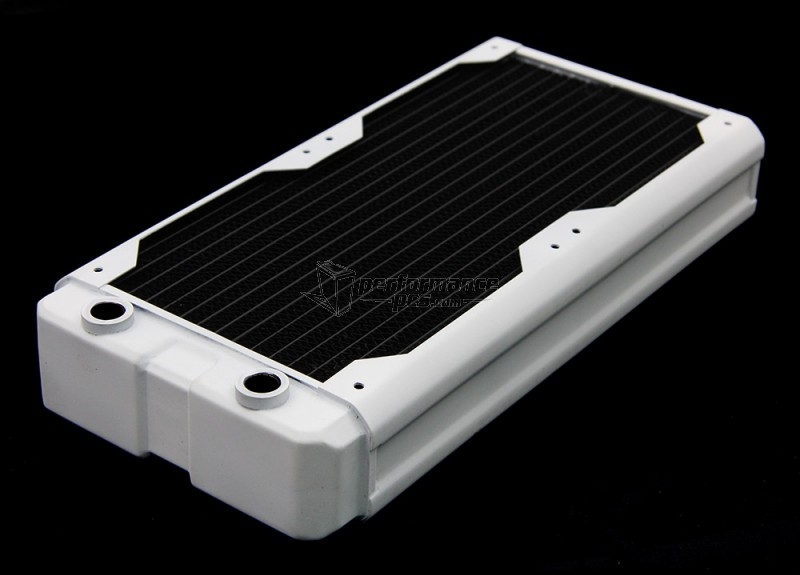
Screw protection plates are not fitted under the fan attachment holes of the Nemesis 280 GTX.
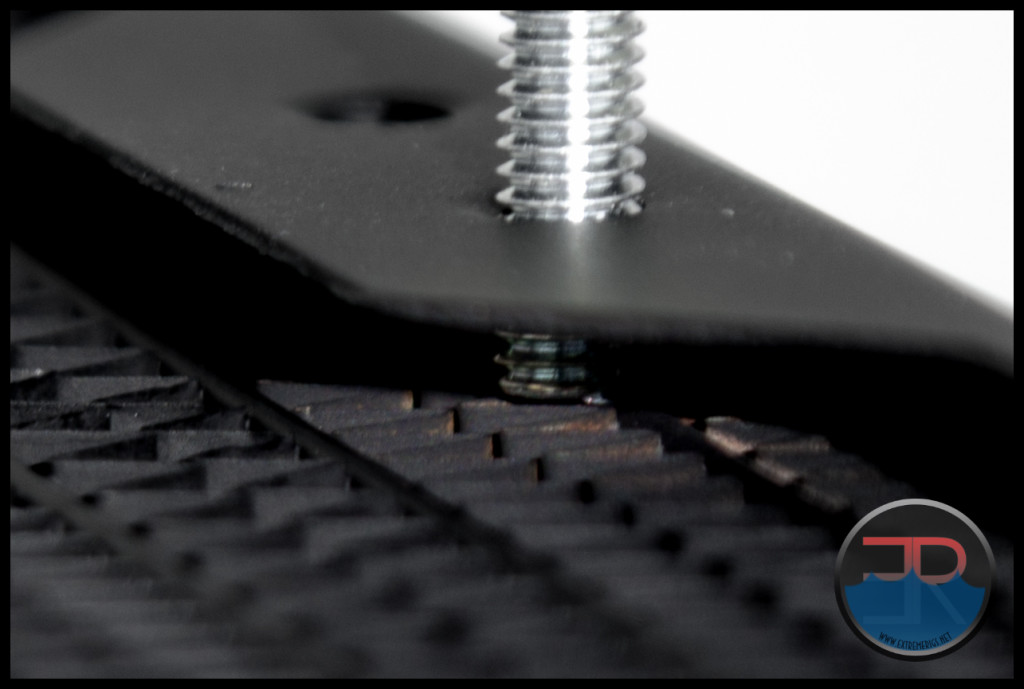
We find this unusual as it seems the Nemesis GTX series is the only Hardware Labs offering which doesn’t have them fitted.
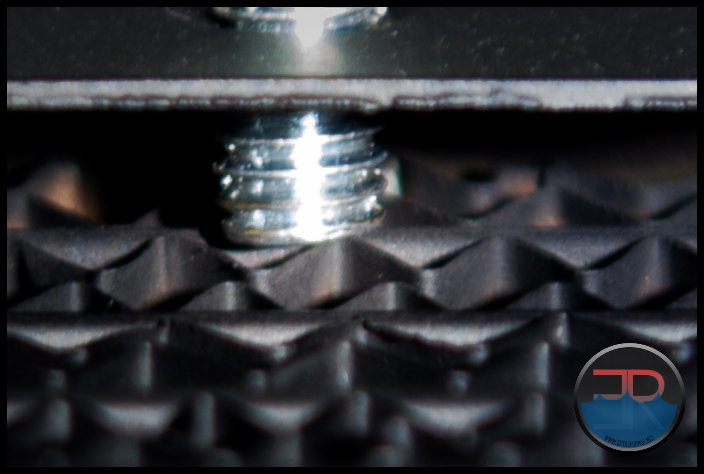
Unfortunately one set of tubes is located under the screw holes. So as always, we recommend checking your screw lengths carefully before tightening down the fan assembly. No doubt this is the reason for the 28mm screws.
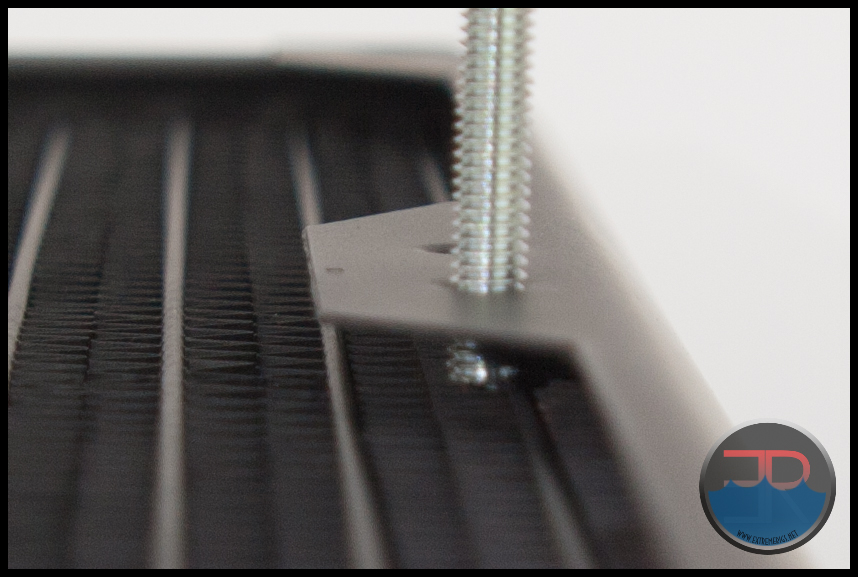
A standard 15mm spacing is used between the center fan attachment holes..
The first technical drawing showed a fan spacing of 124.5mm which is just about perfect for a 140mm fan which has a center spacing of ~125mm.
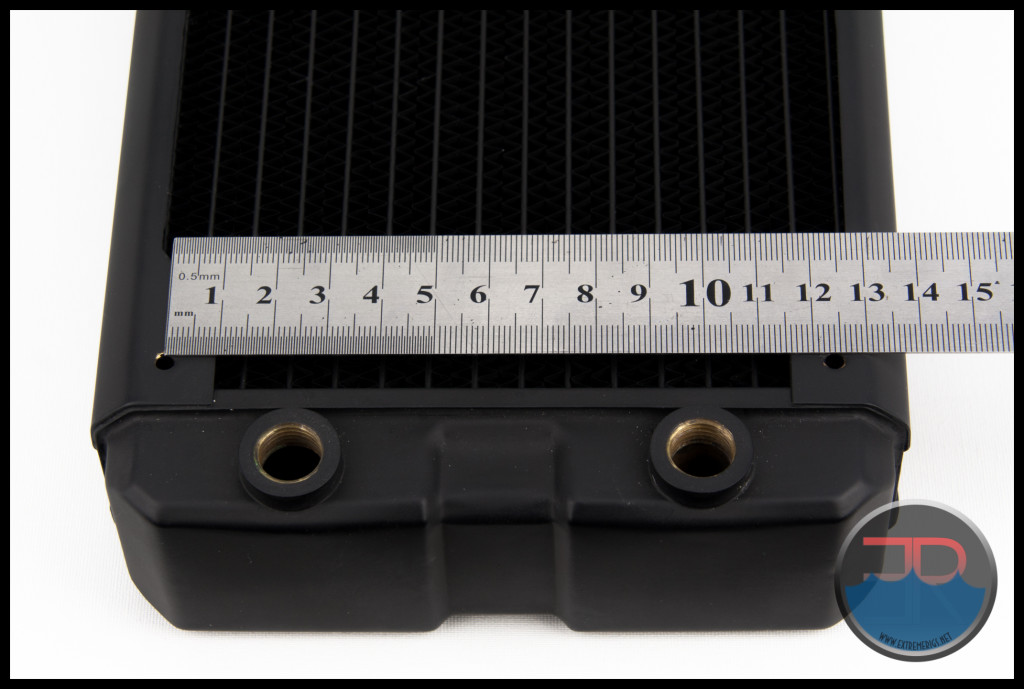
Fan spacing distances across and lengthwise were all as good as could be hoped for.
Speaking of fans, let’s take a look at the Nemesis 280 GTX with a few different fans attached.
The Nemesis 280 GTX is fitted with just 2 x G 1/4 ports. We love a good multi-port rad and while having only 2 ports left us wanting more, we understand that the front to back flow path means it would be rather difficult to implement more port options.
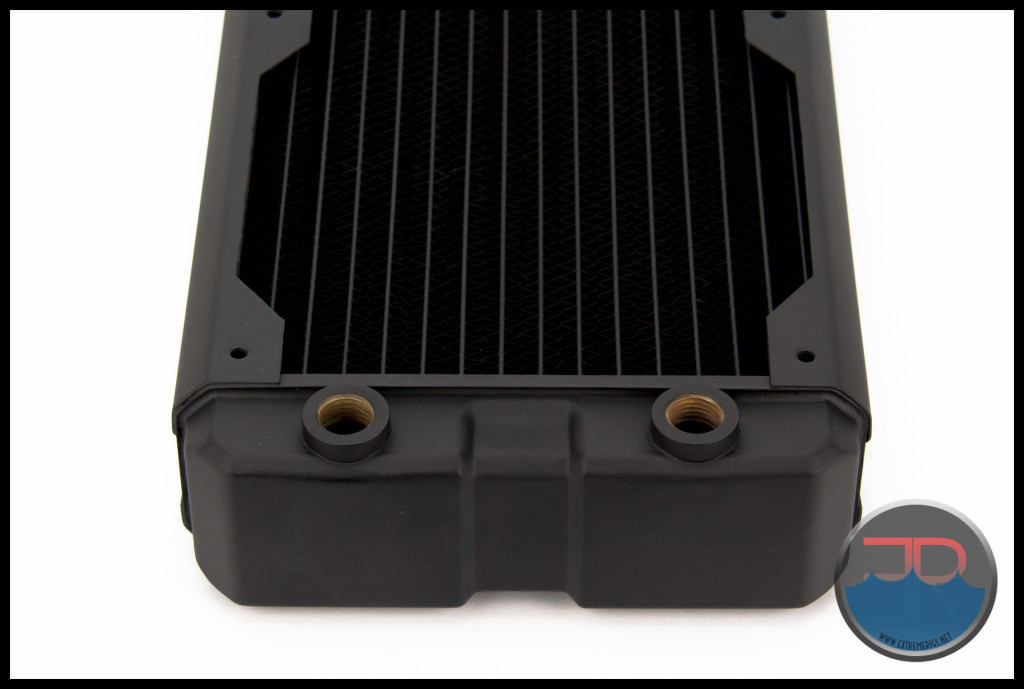 No alternate ports are on the other side or ends of the tanks.
No alternate ports are on the other side or ends of the tanks.
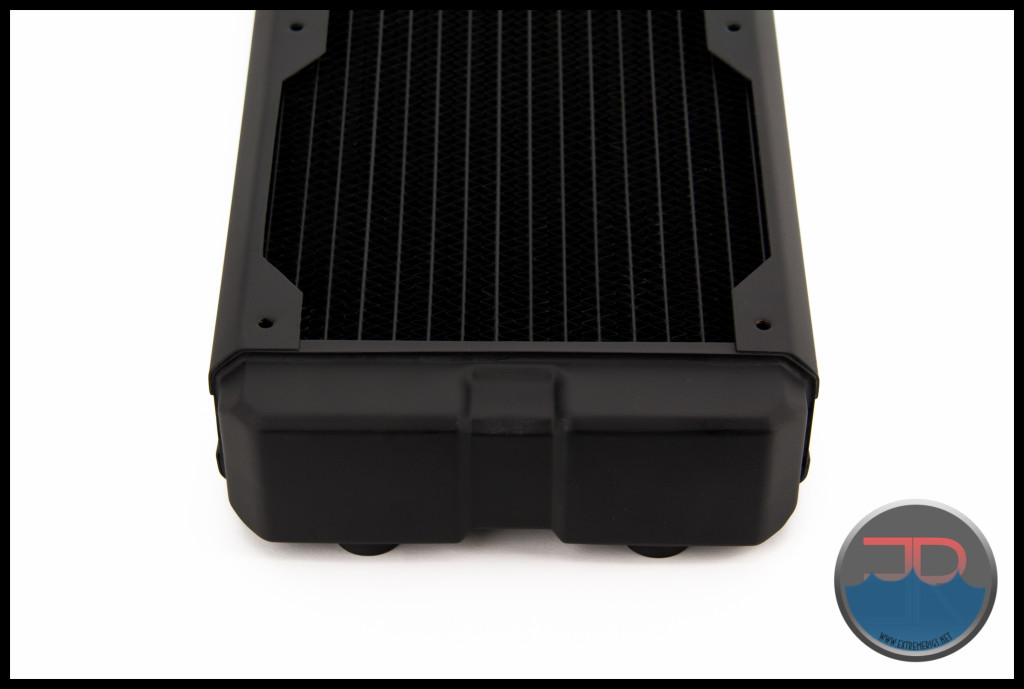 and no ancillary port is fitted to the return end.
and no ancillary port is fitted to the return end.
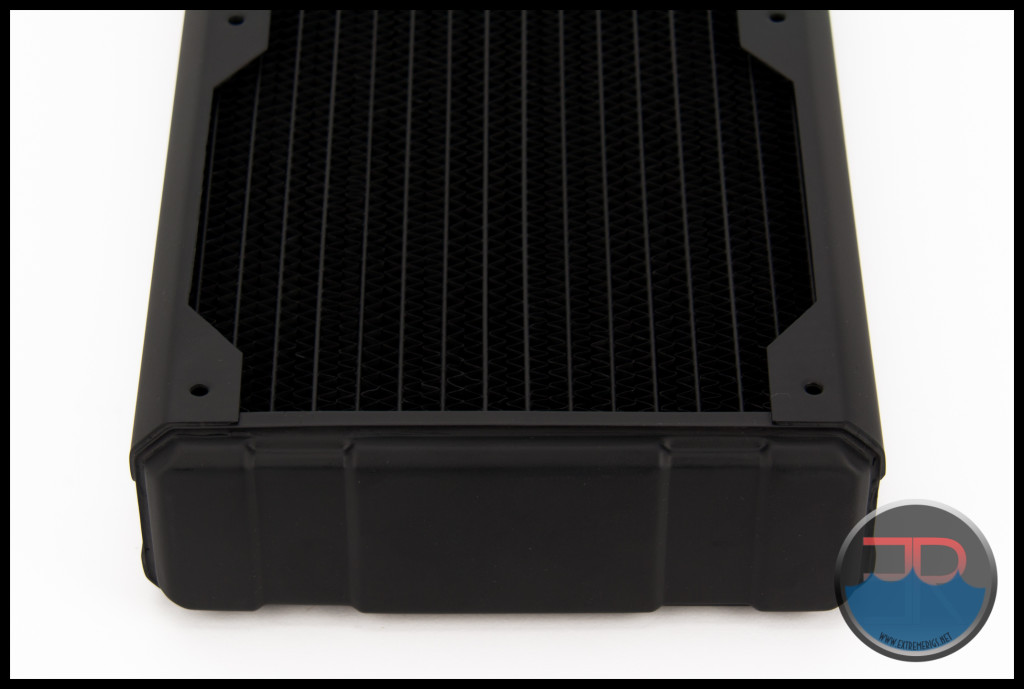
This leaves us with a modern looking twist on a radiator with “traditional” port locations.
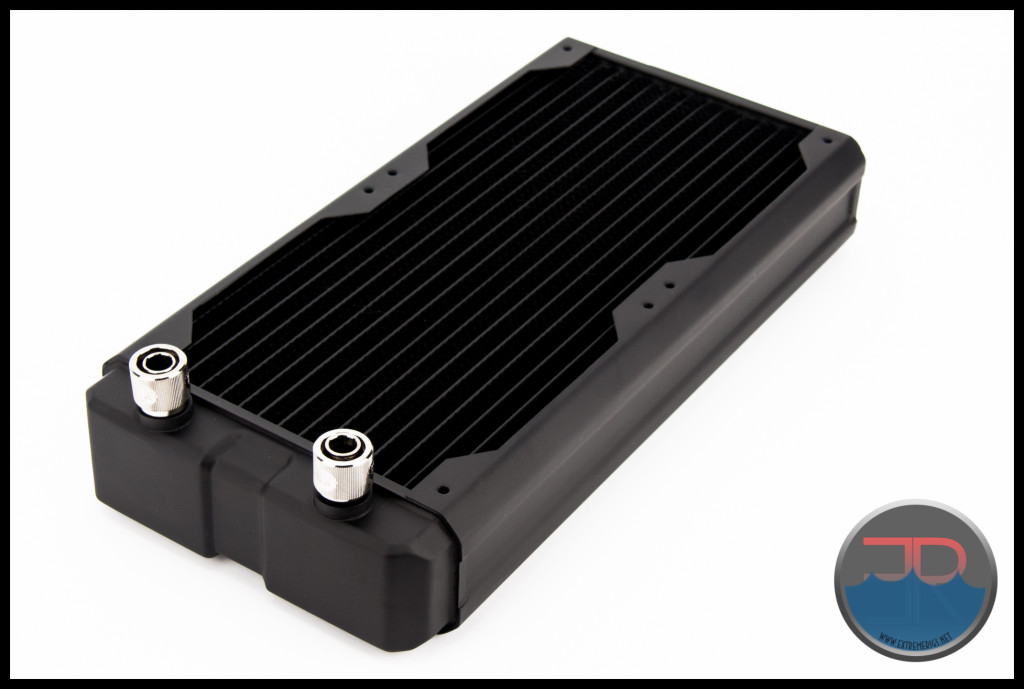
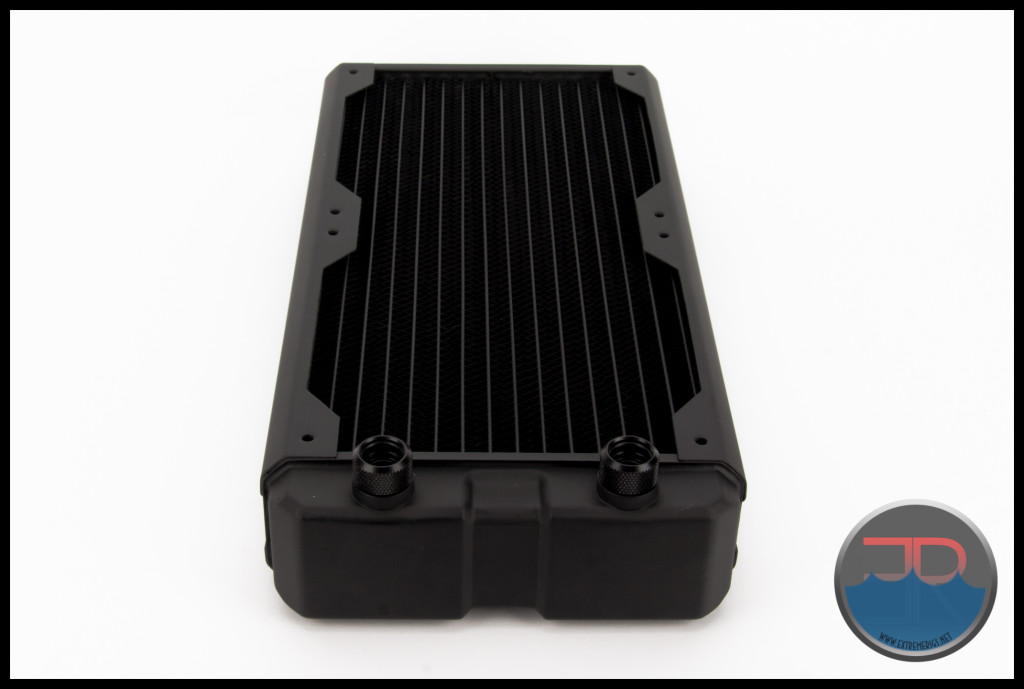
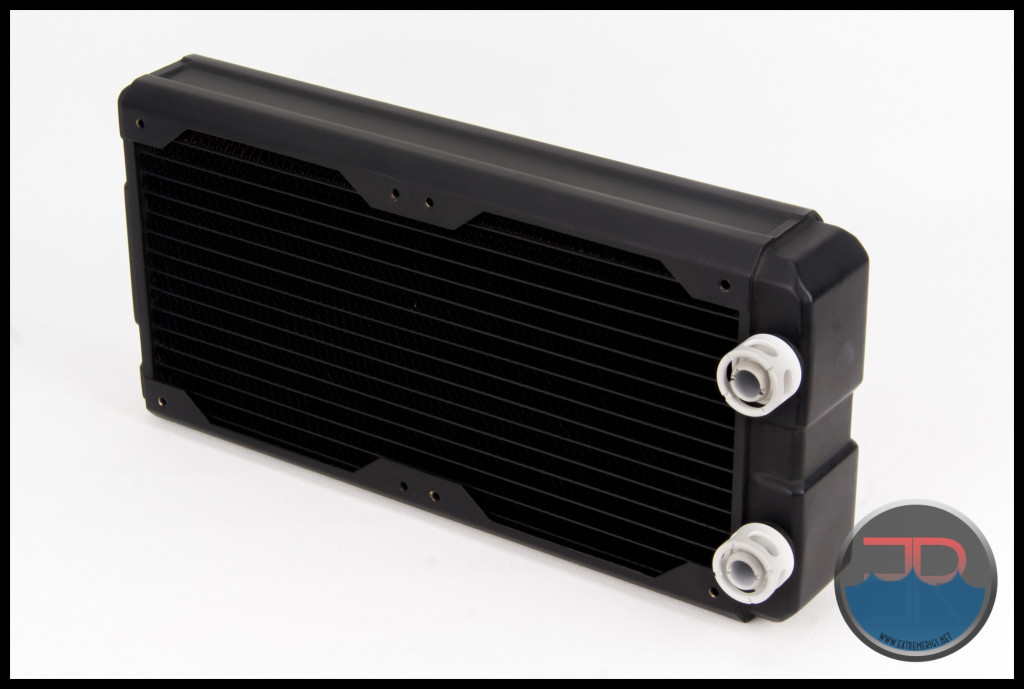 Here a Bitspower jumbo sized 1/2″ x 3/4″ compression fitting which is 25.5mm wide is installed with a fan attached. Therefore even the largest of fittings can be used on the Nemesis 280 GTX.
Here a Bitspower jumbo sized 1/2″ x 3/4″ compression fitting which is 25.5mm wide is installed with a fan attached. Therefore even the largest of fittings can be used on the Nemesis 280 GTX.
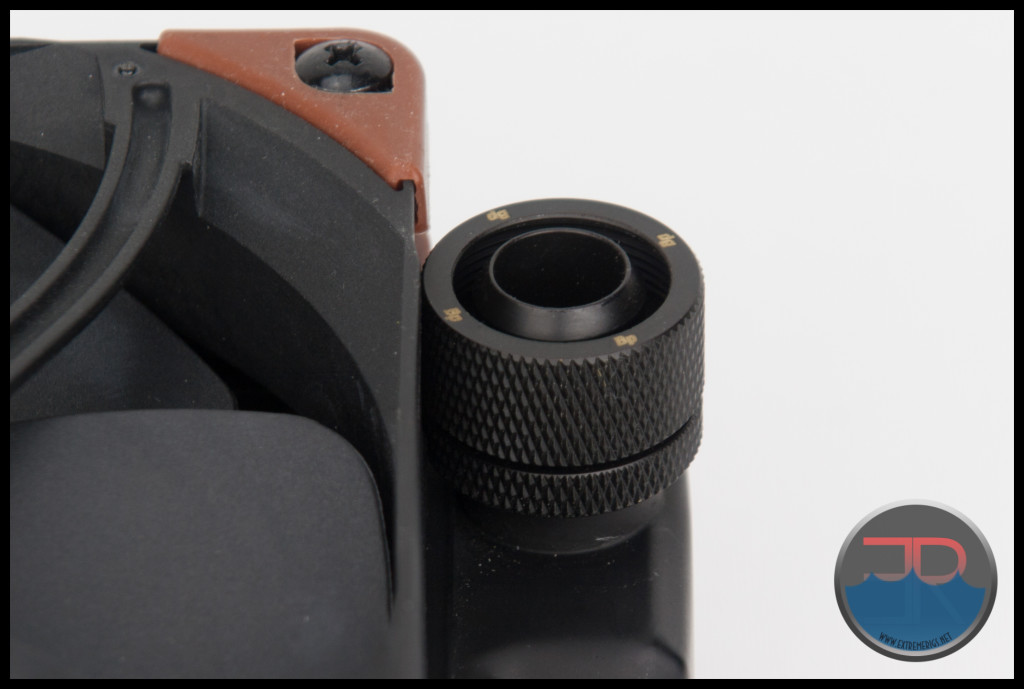
Care has been taken to avoid paint getting onto the thread of the ports. It’s small details like this which make for carefree integration into your loop and avoiding any unnecessary maintenance issues.
So we have a 54mm thick radiator with a medium density core which has a front to back flow path. Only two G 1/4 ports are fitted and screw protection plates are not installed. The paint finish on the matte black sample was excellent as was the overall build quality.
Let’s see how it performs…
![]()







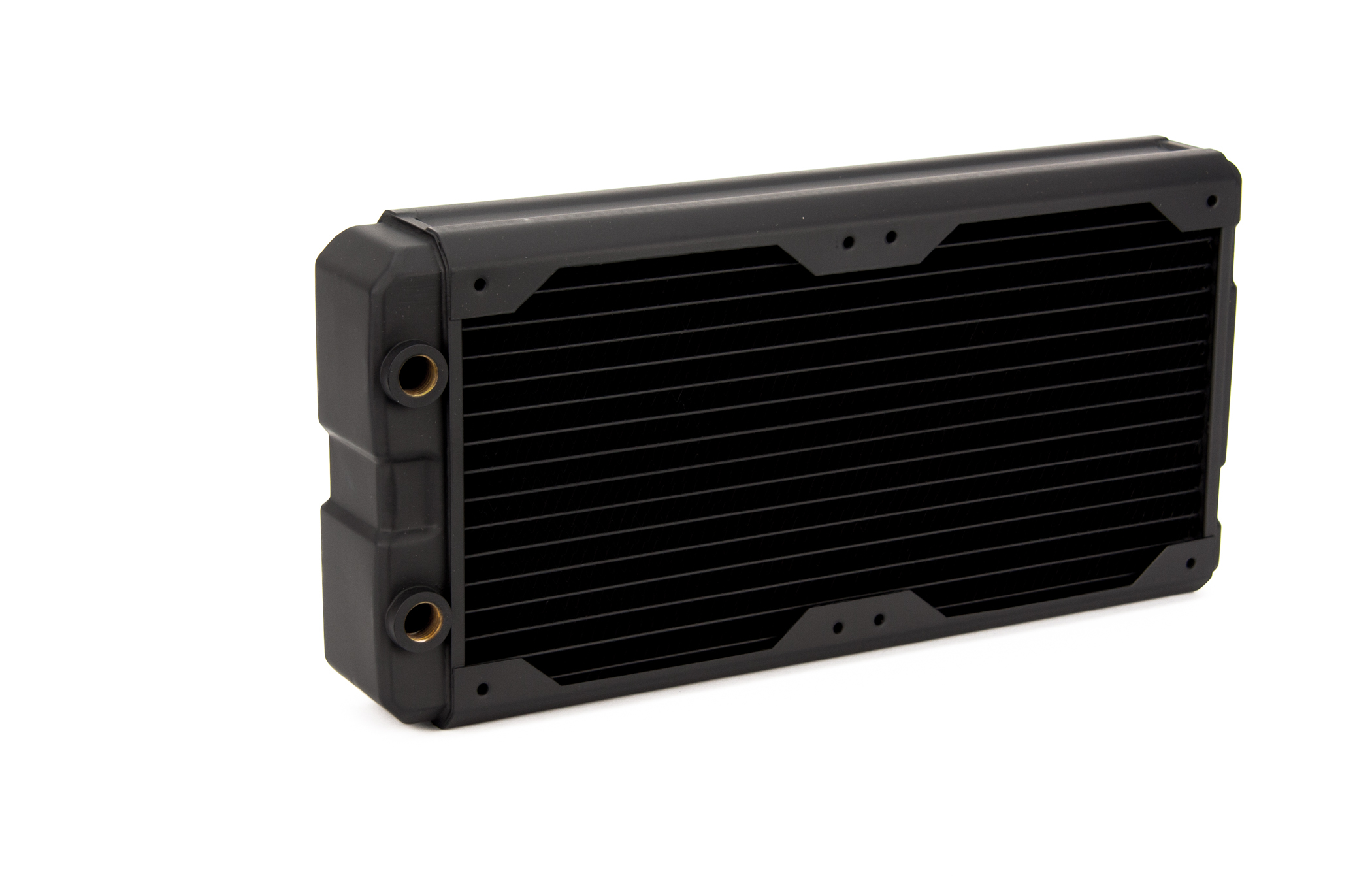
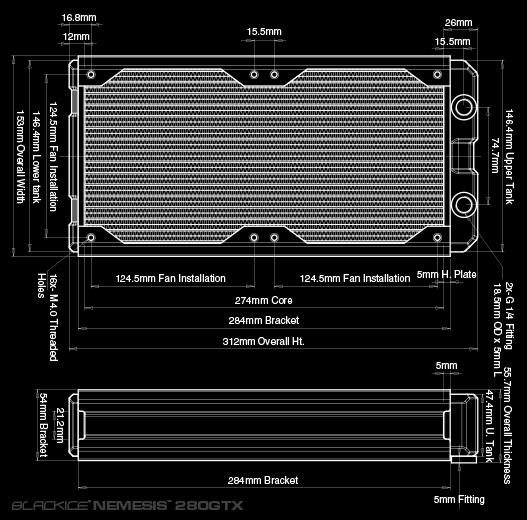
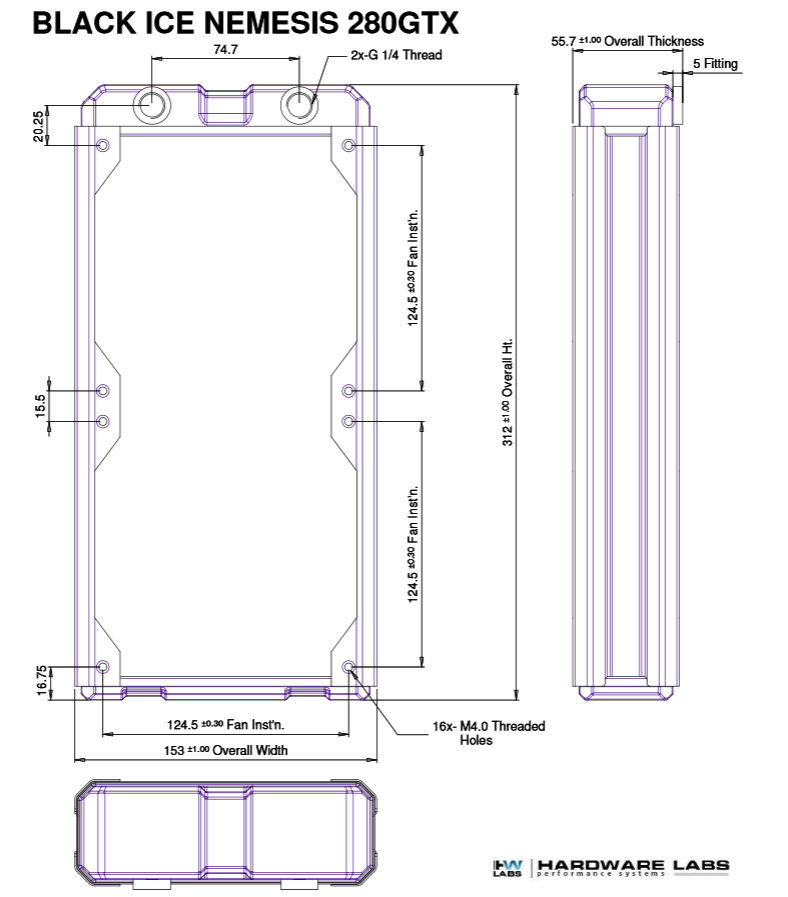

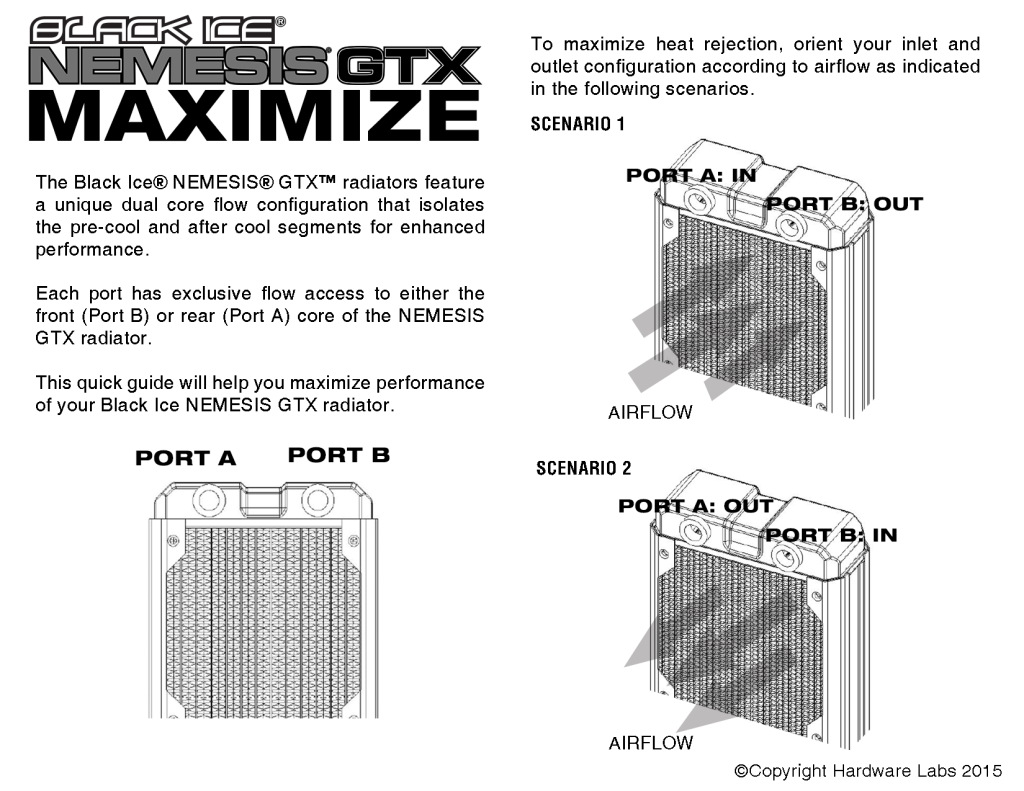
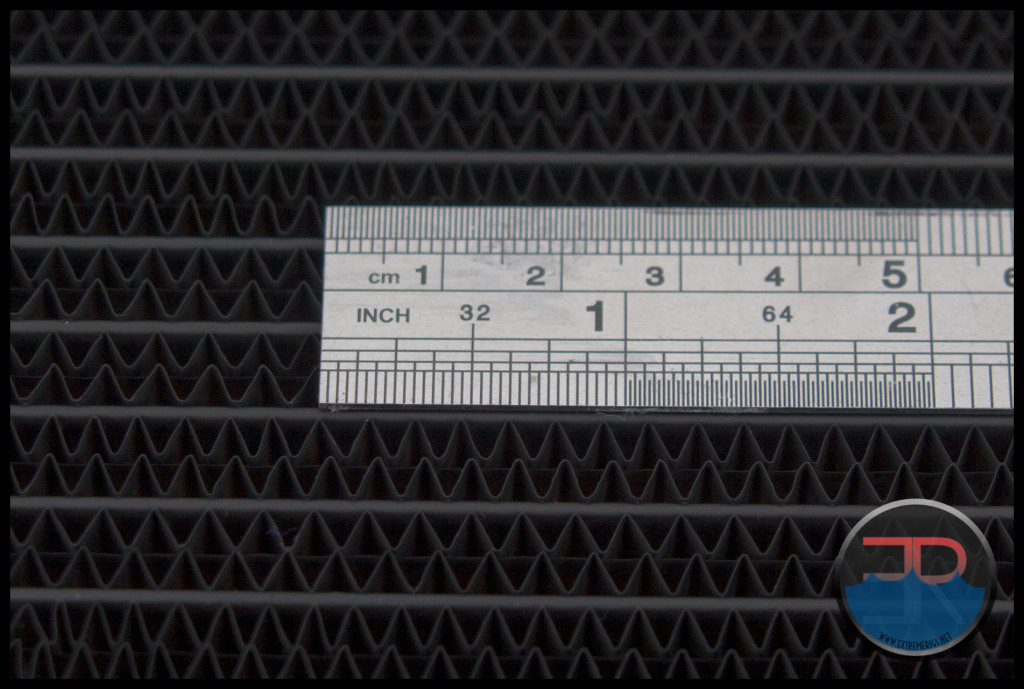
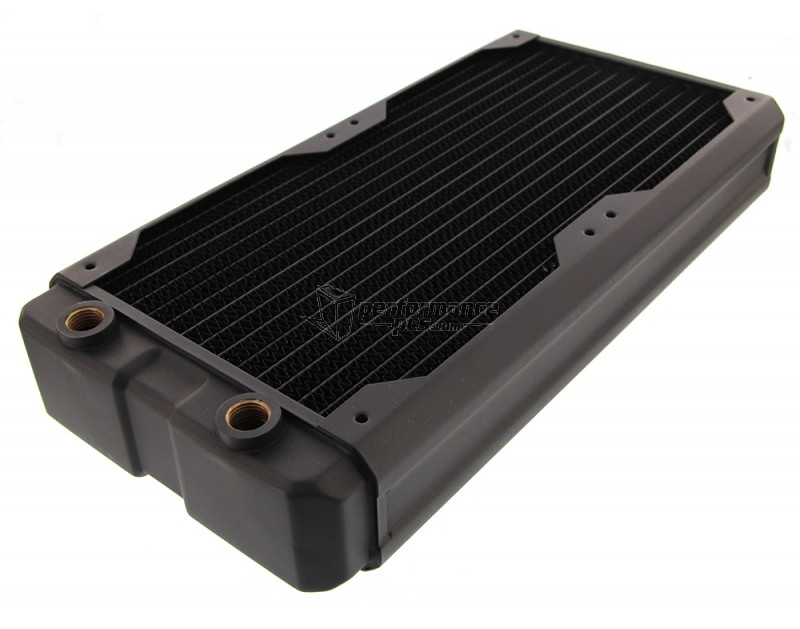
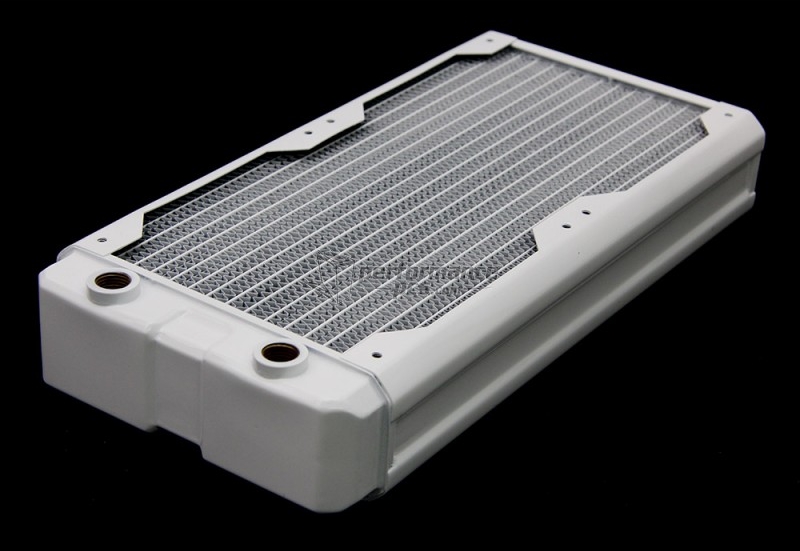
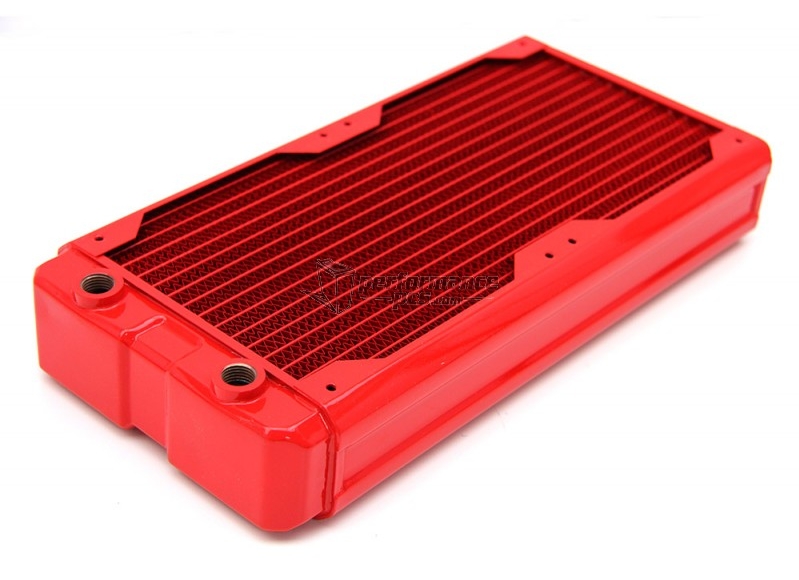
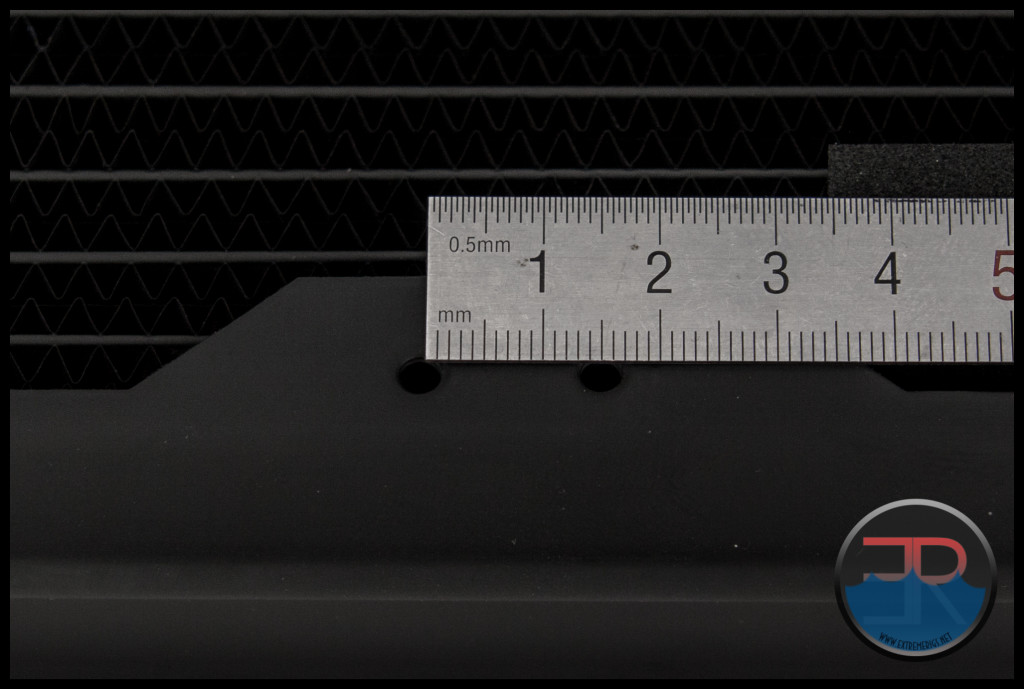
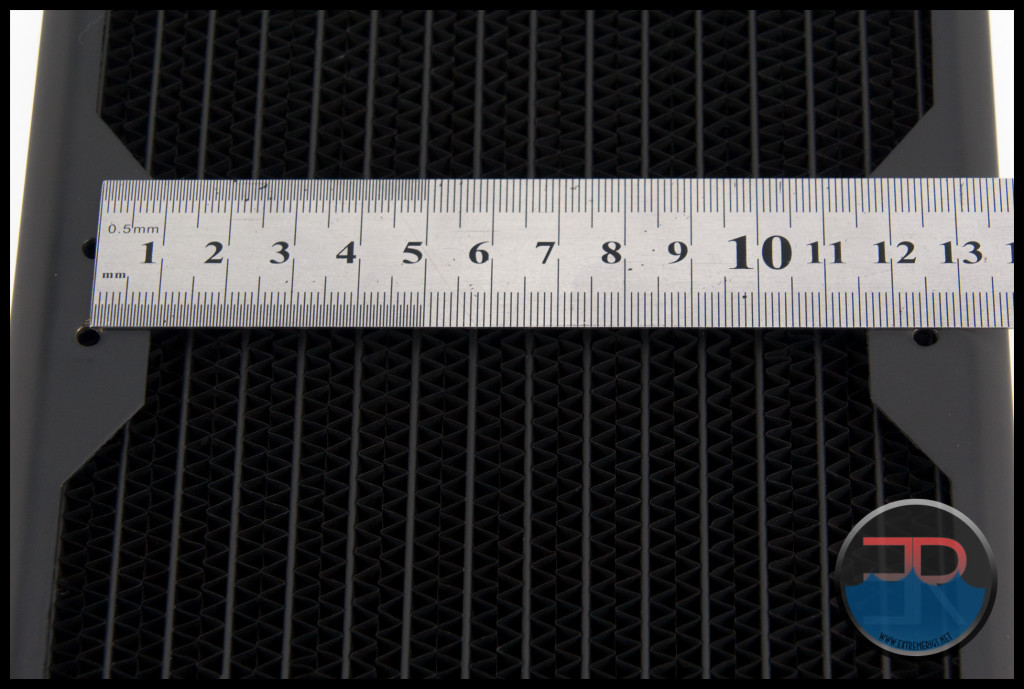
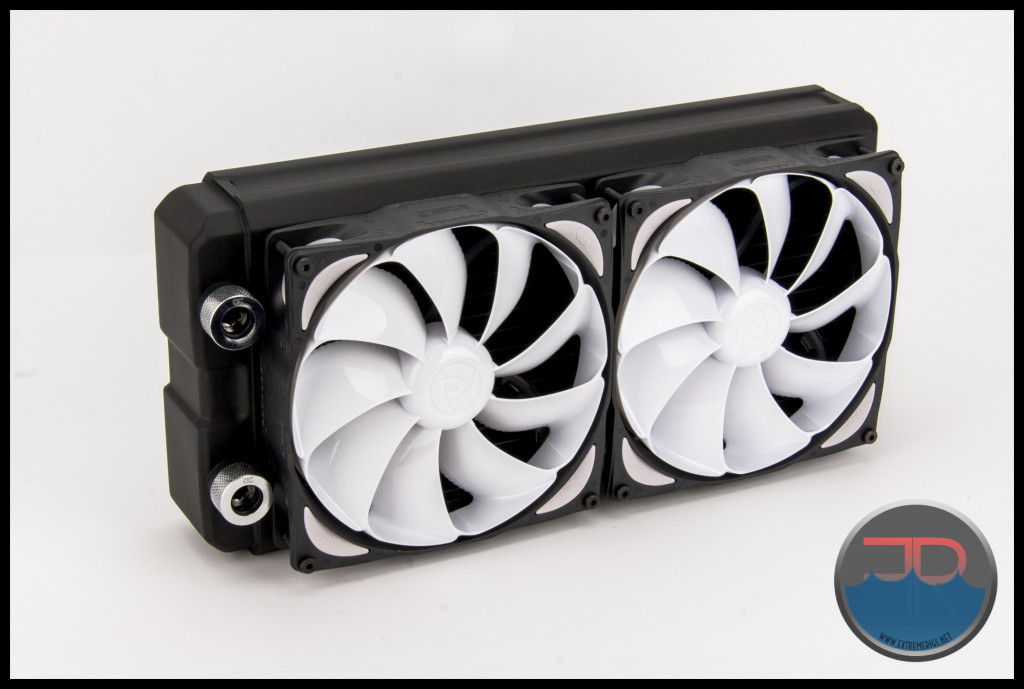
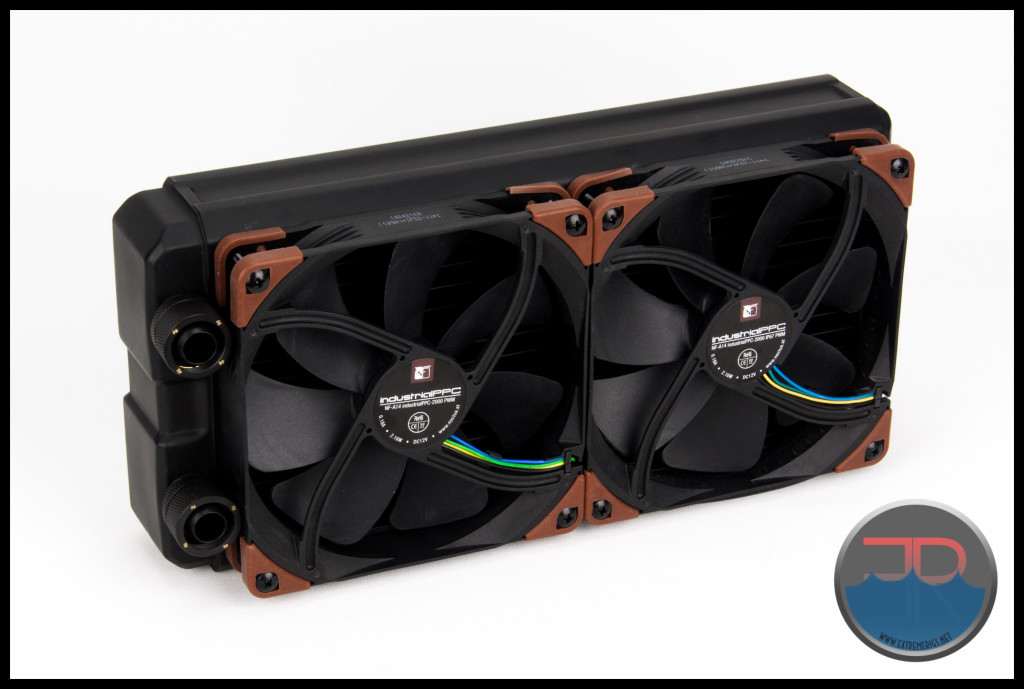
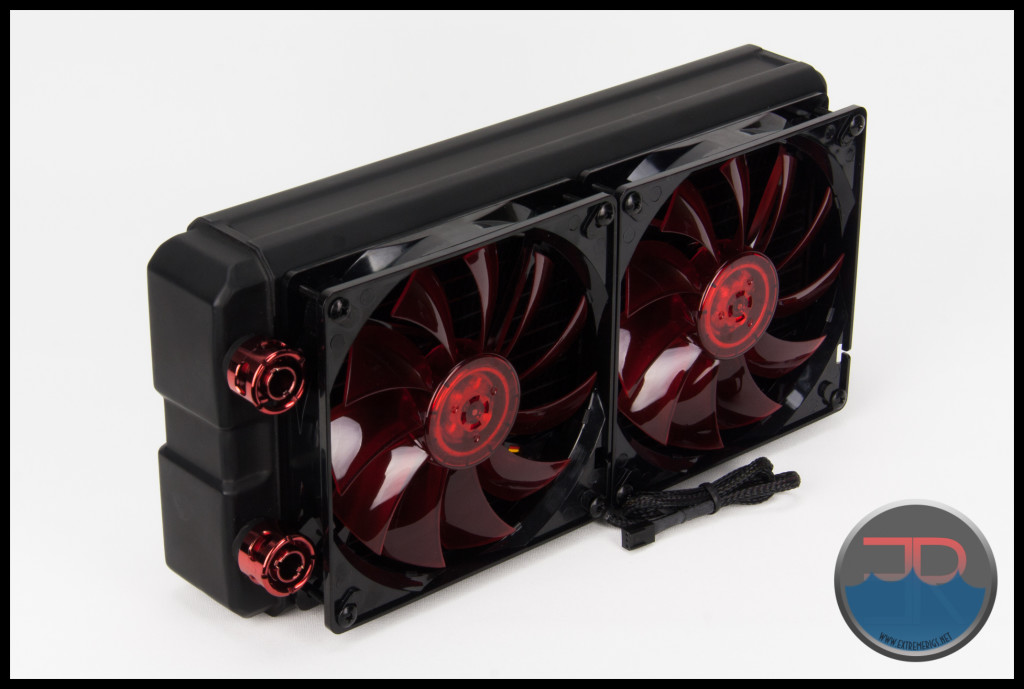
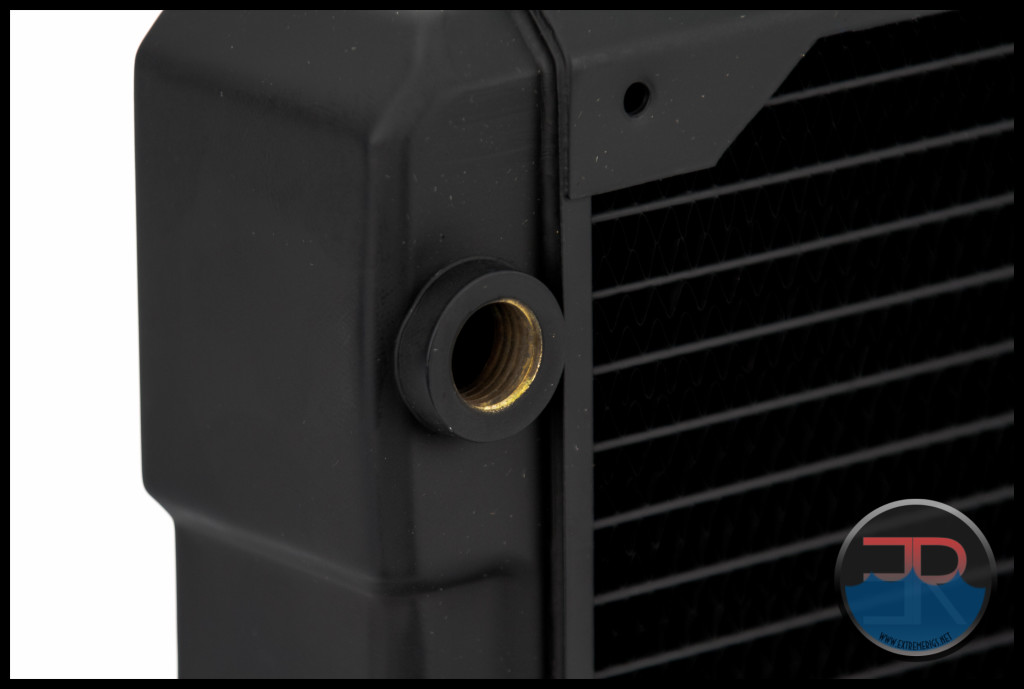
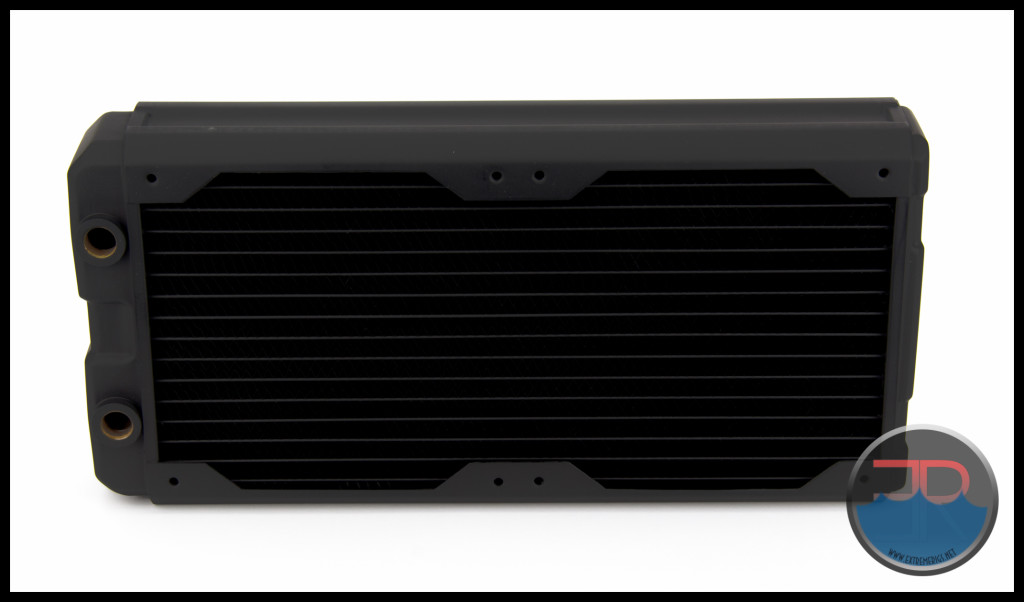



Why is such a thick rad not multiport? At least have 4 ports for easy top filling, and a temps sensor….. would help a ton.
Hey Drew – The Nemesis GTX rads have this front to back flow that makes adding alternative input/output ports quite hard because the end tank is split in half in the different way to a u-flow rad. Now that’s not to say it can’t be done with some tubes and more welding – but it would complicate things and push the price up. However ports could be added at both ends for functionality without being allowed for input/output – i.e. for filling/draining/temp sensors. This would give more functionality at least without requiring more complicated internal tubes and welding.
Comments are closed.